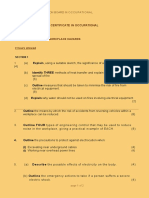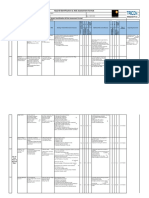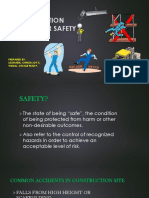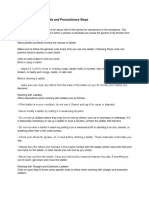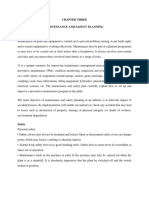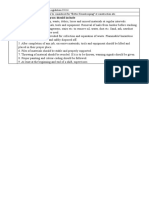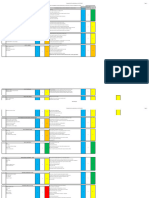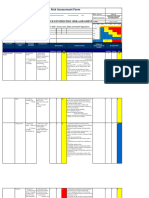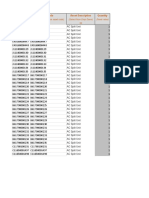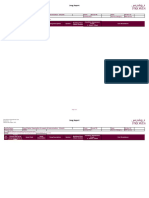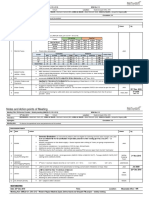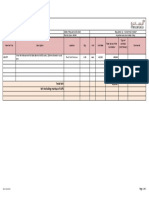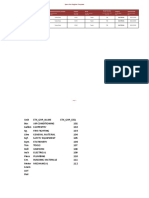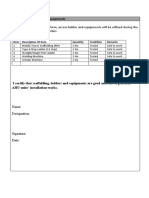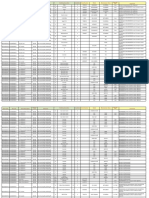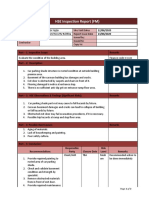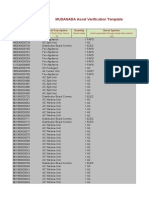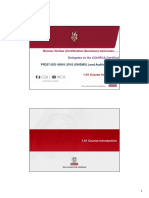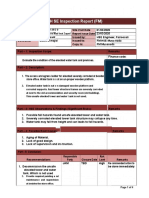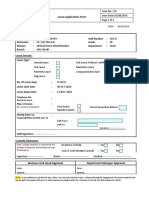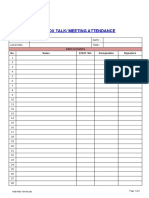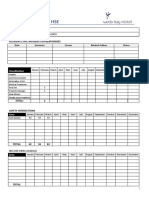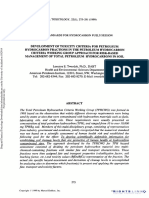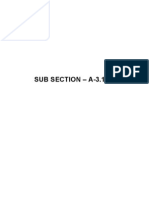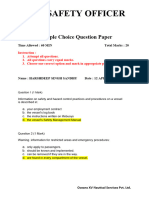0% found this document useful (0 votes)
93 views10 pagesGuide On Safety in Lift Repair & Maintenance Occupational Safety and Health Branch Labour Department
This document provides guidance on safety precautions for lift repair and maintenance. It outlines major hazards including electrocution, trapping, falls, falling objects, and fires. Recommendations are given to plan safety measures, follow codes of practice, provide training, use protective equipment, and inform authorities of accidents. Specific precautions address fall prevention, working in lift pits, electrical, trapping, lifting, and fire hazards. Duties of workers include following instructions and emergency procedures.
Uploaded by
fairoos aliCopyright
© © All Rights Reserved
We take content rights seriously. If you suspect this is your content, claim it here.
Available Formats
Download as DOC, PDF, TXT or read online on Scribd
0% found this document useful (0 votes)
93 views10 pagesGuide On Safety in Lift Repair & Maintenance Occupational Safety and Health Branch Labour Department
This document provides guidance on safety precautions for lift repair and maintenance. It outlines major hazards including electrocution, trapping, falls, falling objects, and fires. Recommendations are given to plan safety measures, follow codes of practice, provide training, use protective equipment, and inform authorities of accidents. Specific precautions address fall prevention, working in lift pits, electrical, trapping, lifting, and fire hazards. Duties of workers include following instructions and emergency procedures.
Uploaded by
fairoos aliCopyright
© © All Rights Reserved
We take content rights seriously. If you suspect this is your content, claim it here.
Available Formats
Download as DOC, PDF, TXT or read online on Scribd
/ 10





